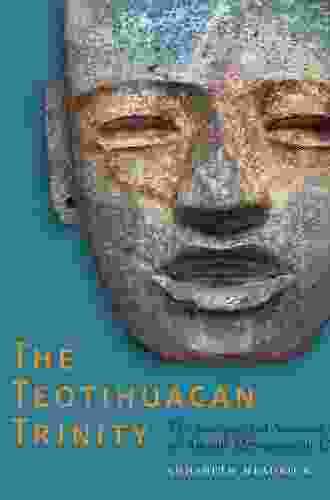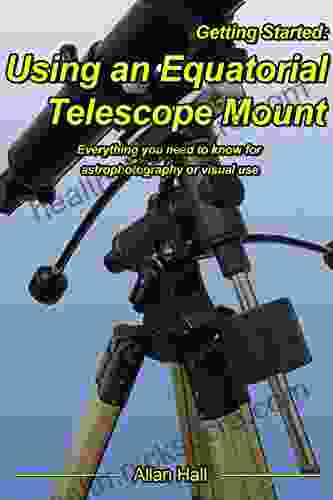The Sociopolitical Structure of An Ancient Mesoamerican City: The William And

The William And was an ancient Mesoamerican city that flourished in the central Mexican highlands from around 1000 to 1500 AD. The city was the capital of the Tepanec Empire and was one of the most important cities in Mesoamerica at the time.
4.8 out of 5
| Language | : | English |
| File size | : | 15305 KB |
| Text-to-Speech | : | Enabled |
| Screen Reader | : | Supported |
| Enhanced typesetting | : | Enabled |
| Word Wise | : | Enabled |
| Print length | : | 230 pages |
The William And was a large and complex city, with a population of over 100,000 people. The city was divided into several neighborhoods, each of which was home to a different social group. The most important neighborhood was the ceremonial center, which was home to the city's temples and palaces. Other neighborhoods were home to the city's merchants, artisans, and farmers.
The William And was ruled by a powerful elite class, which consisted of the city's priests, nobles, and military leaders. The elite class controlled the city's government and economy, and they lived in the city's finest homes. The rest of the population was divided into several social classes, including the commoners, the slaves, and the serfs.
The William And was a highly stratified society, with a clear division between the elite class and the rest of the population. The elite class enjoyed a number of privileges, including the right to own land, the right to vote, and the right to hold public office. The commoners, on the other hand, had few rights and were subject to the authority of the elite class.
The William And was a prosperous city, and its economy was based on agriculture, trade, and craft production. The city was a major center of trade, and goods from all over Mesoamerica were traded in the city's markets. The William And was also a major center of craft production, and the city's artisans produced a wide variety of goods, including pottery, textiles, and jewelry.
The William And was a powerful and influential city, and it played a major role in the history of Mesoamerica. The city was the capital of the Tepanec Empire, which was one of the most powerful empires in Mesoamerica. The William And was also a major center of culture and learning, and the city's scholars and artists produced some of the most important works of art and literature in Mesoamerica.
The William And was abandoned around 1500 AD, and the city's ruins are now a UNESCO World Heritage Site. The ruins of the city are a testament to the power and sophistication of the ancient Mesoamerican civilization.
The Sociopolitical Structure of The William And
The sociopolitical structure of The William And was complex and hierarchical. The city was ruled by a powerful elite class, which consisted of the city's priests, nobles, and military leaders. The elite class controlled the city's government and economy, and they lived in the city's finest homes. The rest of the population was divided into several social classes, including the commoners, the slaves, and the serfs.
The elite class was the most powerful social group in The William And. The elite class consisted of the city's priests, nobles, and military leaders. The priests were responsible for the city's religious ceremonies and rituals. The nobles were responsible for the city's government and administration. The military leaders were responsible for the city's defense.
The commoners were the largest social group in The William And. The commoners were made up of farmers, artisans, and merchants. The farmers were responsible for producing the food that the city needed. The artisans were responsible for producing the goods that the city needed. The merchants were responsible for trading the city's goods with other cities.
The slaves were the lowest social group in The William And. The slaves were owned by the elite class and were forced to work for them. The slaves were used to perform a variety of tasks, including farming, construction, and domestic work.
The serfs were a group of people who were not free but were not slaves either. The serfs were bound to the land and were forced to work for the elite class. The serfs were used to perform a variety of tasks, including farming, construction, and domestic work.
The sociopolitical structure of The William And was complex and hierarchical. The city was ruled by a powerful elite class, which consisted of the city's priests, nobles, and military leaders. The rest of the population was divided into several social classes, including the commoners, the slaves, and the serfs.
The Economy of The William And
The economy of The William And was based on agriculture, trade, and craft production. The city was a major center of trade, and goods from all over Mesoamerica were traded in the city's markets. The William And was also a major center of craft production, and the city's artisans produced a wide variety of goods, including pottery, textiles, and jewelry.
Agriculture was the most important economic activity in The William And. The city was located in a fertile valley, and the farmers were able to produce a variety of crops, including corn, beans, and squash. The farmers also raised livestock, including pigs, chickens, and turkeys.
Trade was another important economic activity in The William And. The city was a major center of trade, and goods from all over Mesoamerica were traded in the city's markets. The merchants of The William And traded a variety of goods, including food, clothing, and luxury items.
Craft production was also an important economic activity in The William And. The city's artisans produced a wide variety of goods, including pottery, textiles, and jewelry. The artisans of The William And were skilled craftsmen, and their work was highly prized by the elite class.
The economy of The William And was prosperous and diverse. The city was a major center of trade and craft production, and the city's farmers were able to produce a variety of crops. The William And was a wealthy and prosperous city, and its economy was one of the most important in Mesoamerica.
The Culture of The William And
The William And was a major center of culture and learning. The city's scholars and artists produced some of the most important works of art and literature in Mesoamerica. The William And was also a major center of religious pilgrimage, and the city's temples were visited by people from all over Mesoamerica.
The art of The William And was highly sophisticated and varied. The city's artists produced a wide variety of works of art, including sculptures, paintings, and ceramics. The sculptures of The William And were particularly impressive, and they often depicted gods, rulers, and other important figures.
The literature of The William And was also highly sophisticated. The city's scholars produced a wide variety of works of literature, including poetry, history, and philosophy. The poetry of The William And was particularly impressive, and it often explored themes such as love, loss, and death.
The William And was also a major center of religious pilgrimage. The city's temples were visited by people from all over Mesoamerica. The people of The William And believed that the city was a sacred place, and they made pilgrimages to the city to seek the favor of the gods.
The culture of The William And was rich and diverse. The city's scholars and artists produced some of the most important works of art and literature in Mesoamerica. The William And was also a major center of religious pilgrimage, and the city's temples were visited by people from all over Mesoamerica. The William And was a vibrant and cosmopolitan city, and its culture was one of the most important in Mesoamerica.
The Decline of The William And
The William And was abandoned around 1500 AD, and the city's ruins are now a UNESCO World Heritage Site. The decline of The William And was caused by a number of factors, including environmental change, warfare, and disease.
Environmental change was one of the major factors that contributed to the decline of The William And. The climate in the central Mexican highlands became drier and colder around 1500 AD, and this made it difficult for the city's farmers to produce enough food. The city's population also began to decline, and this made it difficult for the city to defend itself against its enemies.
Warfare was another major factor that contributed to the decline of The William And. The city was attacked by a number of different enemies, including the Aztecs and the Spanish. The Aztecs were a powerful empire that was based in the Valley of Mexico, and they were able to conquer The William And in the early 1500s.
4.8 out of 5
| Language | : | English |
| File size | : | 15305 KB |
| Text-to-Speech | : | Enabled |
| Screen Reader | : | Supported |
| Enhanced typesetting | : | Enabled |
| Word Wise | : | Enabled |
| Print length | : | 230 pages |
Do you want to contribute by writing guest posts on this blog?
Please contact us and send us a resume of previous articles that you have written.
 Fiction
Fiction Non Fiction
Non Fiction Romance
Romance Mystery
Mystery Thriller
Thriller SciFi
SciFi Fantasy
Fantasy Horror
Horror Biography
Biography Selfhelp
Selfhelp Business
Business History
History Classics
Classics Poetry
Poetry Childrens
Childrens Young Adult
Young Adult Educational
Educational Cooking
Cooking Travel
Travel Lifestyle
Lifestyle Spirituality
Spirituality Health
Health Fitness
Fitness Technology
Technology Science
Science Arts
Arts Crafts
Crafts DIY
DIY Gardening
Gardening Petcare
Petcare Anna Leinberger
Anna Leinberger Jennifer Waldburger
Jennifer Waldburger William B Helmreich
William B Helmreich Pamela Douglas
Pamela Douglas Gary Sizer
Gary Sizer Frederick Courteney Selous
Frederick Courteney Selous Kaitlyn Hill
Kaitlyn Hill Aly Raisman
Aly Raisman Karen Blumenthal
Karen Blumenthal Roy Macskimming
Roy Macskimming Ethem Mining
Ethem Mining Josephine Perry
Josephine Perry Tim Baker
Tim Baker Dennis Overbye
Dennis Overbye John Bul Dau
John Bul Dau Judith Rich Harris
Judith Rich Harris Mary Quinlan Mcgrath
Mary Quinlan Mcgrath Catherine Gildiner
Catherine Gildiner Tiger Woods
Tiger Woods Meredith Russo
Meredith Russo Signe Pike
Signe Pike Teri Moser Woo
Teri Moser Woo Phil Hornshaw
Phil Hornshaw Allan Phillips
Allan Phillips Rick Johnson
Rick Johnson Matthew Mccoy
Matthew Mccoy Annie F Downs
Annie F Downs Natasha Devon
Natasha Devon Michael Fullan
Michael Fullan Brenda Boyd
Brenda Boyd Debi Pearl
Debi Pearl Suzanne Nottingham
Suzanne Nottingham Giuseppe Mascoli
Giuseppe Mascoli Stephen E Flowers
Stephen E Flowers Henry Cloud
Henry Cloud Helen Macdonald
Helen Macdonald James Fallows
James Fallows Ronald Hutton
Ronald Hutton W Edwards Deming
W Edwards Deming James Kipling
James Kipling Joe Kenn
Joe Kenn Clive Cussler
Clive Cussler Marti Olsen Laney
Marti Olsen Laney Alexandra Amor
Alexandra Amor Raymond Turner
Raymond Turner Peter Hollins
Peter Hollins D C Fergerson
D C Fergerson Jimena Canales
Jimena Canales Paul Green
Paul Green Olajumoke Adenowo
Olajumoke Adenowo Daniel J Levitin
Daniel J Levitin Jennifer Louden
Jennifer Louden Simone Milasas
Simone Milasas Walter Isaacson
Walter Isaacson Amy Wenzel
Amy Wenzel Robert Green
Robert Green Allan Hall
Allan Hall Judith Mckay
Judith Mckay Katy Milkman
Katy Milkman Peter Van Der Linden
Peter Van Der Linden J Richard Gott
J Richard Gott J R R Tolkien
J R R Tolkien Jeremy Evans
Jeremy Evans Robin Stevenson
Robin Stevenson Eickhel Mendoza
Eickhel Mendoza Jonathan Moeller
Jonathan Moeller Laerke Recht
Laerke Recht Joanna Foley Rd
Joanna Foley Rd Trae Dorn
Trae Dorn Joseph Fort Newton
Joseph Fort Newton Ryan Spaeder
Ryan Spaeder Kaylee Cole
Kaylee Cole Vivian Gornick
Vivian Gornick Linda Martella Whitsett
Linda Martella Whitsett Allen Carr
Allen Carr Geoff Salmon
Geoff Salmon Jon S Bailey
Jon S Bailey Perry Lefko
Perry Lefko Sarah P Morris
Sarah P Morris Jean Jacques Chevron
Jean Jacques Chevron Alistair Brownlee
Alistair Brownlee Alison Palmer
Alison Palmer Mark Beauregard
Mark Beauregard Dennis Georgatos
Dennis Georgatos Molly Forbes
Molly Forbes John Hughes
John Hughes Jonathan St B T Evans
Jonathan St B T Evans C Calvin Jones
C Calvin Jones Mourad Boufadene
Mourad Boufadene Kwame Onwuachi
Kwame Onwuachi Bright Summaries
Bright Summaries C S Wilde
C S Wilde Douglas Nicholas
Douglas Nicholas Kim Heacox
Kim Heacox Milt Rosko
Milt Rosko Marc Vachon
Marc Vachon Frank Christianson
Frank Christianson 10th Edition Kindle Edition
10th Edition Kindle Edition Paul J Kosmin
Paul J Kosmin Paul Schullery
Paul Schullery Grant Petersen
Grant Petersen Rebecca St James
Rebecca St James P Schreiber
P Schreiber Alison Pearlman
Alison Pearlman John Bargh Ph D
John Bargh Ph D Deborah Ann Davis
Deborah Ann Davis Shobi Nolan
Shobi Nolan Kota Nozomi
Kota Nozomi Richard H Thaler
Richard H Thaler Susan Ware
Susan Ware Muthukumaran Mani
Muthukumaran Mani David M Killoran
David M Killoran Jack Smith
Jack Smith Joel S Owen
Joel S Owen Sid Roth
Sid Roth Mark Dice
Mark Dice Robert Penn Warren
Robert Penn Warren Annabeth Headrick
Annabeth Headrick Brian Lopes
Brian Lopes Danica G Hays
Danica G Hays Mandi Hickman
Mandi Hickman Tom Kelly
Tom Kelly Amy Saltzman
Amy Saltzman Thomas R Verny
Thomas R Verny Allen G Taylor
Allen G Taylor Mark F Sohn
Mark F Sohn Pottermore Publishing
Pottermore Publishing Karen Murphy
Karen Murphy Dr Ron M Horner
Dr Ron M Horner Jorge Muniz
Jorge Muniz Kate Mcmahon
Kate Mcmahon Ann C Logue
Ann C Logue Jim Cheney
Jim Cheney Kate Wood
Kate Wood Ian Westermann
Ian Westermann Roy Shepard
Roy Shepard Jim Rahtz
Jim Rahtz Carrot Quinn
Carrot Quinn Mark Kistler
Mark Kistler Franz Kellermann
Franz Kellermann Alister E Mcgrath
Alister E Mcgrath Meritxell Castells
Meritxell Castells Kristine Hudson
Kristine Hudson Jenara Nerenberg
Jenara Nerenberg Anna Costaras
Anna Costaras Chris Lundgren
Chris Lundgren Tom Watson
Tom Watson Myrna Blyth
Myrna Blyth Lisa Marshall
Lisa Marshall Charles J Robinson
Charles J Robinson Cy Tymony
Cy Tymony P J Richards
P J Richards Randy Olson
Randy Olson S Allen Counter
S Allen Counter Toru Toba
Toru Toba N B Hankes
N B Hankes Randy Russell
Randy Russell Patrick Stewart
Patrick Stewart John Michael Kelly
John Michael Kelly Rene Almeling
Rene Almeling Allison Williams
Allison Williams Beth Cavenaugh
Beth Cavenaugh Carlos Castaneda
Carlos Castaneda Claude Levi Strauss
Claude Levi Strauss David Hancock
David Hancock Jim Bell
Jim Bell Stephen Haddelsey
Stephen Haddelsey Leonard Shlain
Leonard Shlain Michelle Nijhuis
Michelle Nijhuis Ed Robinson
Ed Robinson Kimberly Brown
Kimberly Brown Neil Hayes
Neil Hayes Sarah Grison
Sarah Grison William W Dressler
William W Dressler Aubrey Gordon
Aubrey Gordon Robert S Witte
Robert S Witte Allison Dolan
Allison Dolan Lynn Stafford Yilmaz
Lynn Stafford Yilmaz Despina Meris
Despina Meris Marlin M Mackenzie
Marlin M Mackenzie Gavin Fairbairn
Gavin Fairbairn James Ferguson
James Ferguson Susan Kuklin
Susan Kuklin Gary Leland
Gary Leland Tom Daley
Tom Daley Jeff Hawkins
Jeff Hawkins Raychelle Cassada Lohmann
Raychelle Cassada Lohmann Allen Stroud
Allen Stroud Tim Rappleye
Tim Rappleye Wendelin Van Draanen
Wendelin Van Draanen Alisha J Brown
Alisha J Brown Gregory Cochran
Gregory Cochran Sam Jefferson
Sam Jefferson John C Lennox
John C Lennox Karen Bonnell
Karen Bonnell Greg Moran
Greg Moran Alivia Stephens
Alivia Stephens Jeff Burlingame
Jeff Burlingame James Patterson
James Patterson Michaelbrent Collings
Michaelbrent Collings Marc Bubbs
Marc Bubbs Novak Djokovic
Novak Djokovic The Editors Of Outside Magazine
The Editors Of Outside Magazine Jeff Gordon
Jeff Gordon Edwin Amenta
Edwin Amenta Chris Chambers
Chris Chambers Dan Miller
Dan Miller Kathleen Bachynski
Kathleen Bachynski Apryl Baker
Apryl Baker Joe Vasicek
Joe Vasicek Joshua Elliot James
Joshua Elliot James Etienne Noumen
Etienne Noumen Linda A Curtis
Linda A Curtis John Lloyd
John Lloyd Jared Cohen
Jared Cohen Elce Junior Lauriston
Elce Junior Lauriston Robert Kiltz
Robert Kiltz Allen Morris Jones
Allen Morris Jones Meredith L Jacobs
Meredith L Jacobs Linda S Jones
Linda S Jones Christopher Bruhn
Christopher Bruhn John Kavanagh
John Kavanagh Tim Roughgarden
Tim Roughgarden Matt Hart
Matt Hart Carlo Ancelotti
Carlo Ancelotti Dr Nadine Sinclair
Dr Nadine Sinclair Cinda Williams Chima
Cinda Williams Chima Robbin Gregory
Robbin Gregory Eugen Herrigel
Eugen Herrigel Judy Converse
Judy Converse Eric Naguski
Eric Naguski Petr Zima
Petr Zima Allan Kardec
Allan Kardec Fluent In Korean
Fluent In Korean Neely Spence Gracey
Neely Spence Gracey Suzanne Alderson
Suzanne Alderson Christina Hoff Sommers
Christina Hoff Sommers John Novosel Jr
John Novosel Jr Brenda Gable
Brenda Gable Philip Gosse
Philip Gosse Greg Strandberg
Greg Strandberg Daniel Mendelsohn
Daniel Mendelsohn Don Harris
Don Harris Chris Lear
Chris Lear Gail Steketee
Gail Steketee Rodney Ford
Rodney Ford Alison Lighthall Miller
Alison Lighthall Miller Chris Cannon
Chris Cannon Bill Horn
Bill Horn Lisa M Rose
Lisa M Rose Sharon Weinberger
Sharon Weinberger Maurice Isserman
Maurice Isserman Kelsey Banfield
Kelsey Banfield Nick Karas
Nick Karas Rowena Murray
Rowena Murray Steven J Burton
Steven J Burton Emily Thiede
Emily Thiede Leah Vanderveldt
Leah Vanderveldt Debra L Martin
Debra L Martin Liz Clark
Liz Clark Allen M Hornblum
Allen M Hornblum George Buehler
George Buehler Linda Greenlaw
Linda Greenlaw Lsatmax Lsat Prep
Lsatmax Lsat Prep Alison Aulakh
Alison Aulakh Rhonda Huettenmueller
Rhonda Huettenmueller Aliza Kelly
Aliza Kelly Michael Reist
Michael Reist Julie Schwietert
Julie Schwietert Joosr
Joosr Monique Joiner Siedlak
Monique Joiner Siedlak Paul S Auerbach
Paul S Auerbach Grace E Stewart
Grace E Stewart Tom Babin
Tom Babin Pasco Valana
Pasco Valana Jeffrey E Young
Jeffrey E Young Bryan Goodwin
Bryan Goodwin Carl Paoli
Carl Paoli Arthur Aughey
Arthur Aughey Felix Marks
Felix Marks Joe Kelly
Joe Kelly Allison Mcdonald Ace
Allison Mcdonald Ace Mary Bergin
Mary Bergin Paul D Brinkman
Paul D Brinkman Grace Lindsay
Grace Lindsay Grant S Lipman
Grant S Lipman Rex L Forehand
Rex L Forehand Iain Gately
Iain Gately Konnie Wong
Konnie Wong Cate Stillman
Cate Stillman Janet E Wall
Janet E Wall Jim Downs
Jim Downs Robin Riley
Robin Riley David F Anderson
David F Anderson Karen Wambach
Karen Wambach Marianne Williamson
Marianne Williamson Y R Davis
Y R Davis Mike Wallace
Mike Wallace Allan G Bluman
Allan G Bluman Chip Coffey
Chip Coffey Ryan Hall
Ryan Hall Noor Ain
Noor Ain Deborah Macnamara Phd
Deborah Macnamara Phd George M Johnson
George M Johnson Bruce Tremper
Bruce Tremper Ashley D Kendall
Ashley D Kendall Nick Riley
Nick Riley Scott Smith
Scott Smith Allison Schrager
Allison Schrager Julie Currin
Julie Currin Robert M Sapolsky
Robert M Sapolsky Edmund G R Kraal
Edmund G R Kraal Pass Your Class
Pass Your Class Jennifer E Smith
Jennifer E Smith Kim Liggett
Kim Liggett John Macinnes
John Macinnes Lynn Rush
Lynn Rush Sean Patrick
Sean Patrick Joel Thomas Chopp
Joel Thomas Chopp Allen Dulles
Allen Dulles Kenji Tokitsu
Kenji Tokitsu Alicia Thomas Woolf
Alicia Thomas Woolf Dan Abrahams
Dan Abrahams Allistair Mccaw
Allistair Mccaw Naomi Kokoricha
Naomi Kokoricha Alan Watts
Alan Watts Sheena Byrom
Sheena Byrom Lydia Sherrer
Lydia Sherrer Vitalis I Valentine
Vitalis I Valentine Valerie Gilpeer
Valerie Gilpeer Eddie Guerrero
Eddie Guerrero Ken Cohen
Ken Cohen Segun Adebajo
Segun Adebajo Christian Asonye
Christian Asonye Godfrey Higgins
Godfrey Higgins Rob Shelsky
Rob Shelsky Tress Bowen
Tress Bowen Andrew Benfield
Andrew Benfield Scott Graham
Scott Graham Ron Merly
Ron Merly Allan House
Allan House Laura Randall
Laura Randall Ronald E Mickens
Ronald E Mickens Jeff Brent
Jeff Brent Kevin Leman
Kevin Leman Susan Neiman
Susan Neiman Theodore B Sauselein
Theodore B Sauselein Anil Seth
Anil Seth Eric Lemarque
Eric Lemarque Rachel Caine
Rachel Caine Vincent Schilling
Vincent Schilling W E Fairbairn
W E Fairbairn Allison Norfolk
Allison Norfolk Jonathan E Steinhart
Jonathan E Steinhart Brian Boone
Brian Boone Greg Henry
Greg Henry Daniel J Siegel
Daniel J Siegel Dave Pelz
Dave Pelz Victor Canning
Victor Canning Winston Churchill
Winston Churchill Joseph Harkreader
Joseph Harkreader William A Haviland
William A Haviland Allen J Christenson
Allen J Christenson Allen Everett
Allen Everett Todd Wilbur
Todd Wilbur Hilda Jarman Muir
Hilda Jarman Muir Lynn Acton
Lynn Acton Brian Treanor
Brian Treanor Jacqueline H Wolf
Jacqueline H Wolf Ben Greenfield
Ben Greenfield Jim Cobb
Jim Cobb Joe Sparrow
Joe Sparrow Dan Millman
Dan Millman Bret Hart
Bret Hart Saint Teresa Of Avila
Saint Teresa Of Avila Nevin Martell
Nevin Martell Alistair Cooke
Alistair Cooke Eli Saslow
Eli Saslow Alison Scott Wright
Alison Scott Wright Sportsman S Connection
Sportsman S Connection Dr Danielle Ward
Dr Danielle Ward Frederick Mosteller
Frederick Mosteller Lennard Bickel
Lennard Bickel Shawn D Madden
Shawn D Madden Rex Allen Jones Ii
Rex Allen Jones Ii James Sieckmann
James Sieckmann Gerd Gigerenzer
Gerd Gigerenzer Glenn Tinnin
Glenn Tinnin Andrew Kastor
Andrew Kastor Andrie De Vries
Andrie De Vries The Dark Lords
The Dark Lords Allan Trevor
Allan Trevor Chris Fox
Chris Fox Roy Clark
Roy Clark Charlotte Runcie
Charlotte Runcie Selene Yeager
Selene Yeager Liz Evers
Liz Evers Alison Gervais
Alison Gervais Matthew Syed
Matthew Syed Peter Mark Adams
Peter Mark Adams Suzanne O Sullivan
Suzanne O Sullivan Don Miguel Ruiz
Don Miguel Ruiz Stephen R Covey
Stephen R Covey Maria Rickert Hong
Maria Rickert Hong Mike Zimmerman
Mike Zimmerman Pure Calisthenics
Pure Calisthenics Holly Homer
Holly Homer Kara Lawrence
Kara Lawrence Casi Mclean
Casi Mclean Carolyn Shearlock
Carolyn Shearlock Travis Jeffery
Travis Jeffery Allison Tyson
Allison Tyson Roger Bannister
Roger Bannister Barbara De Angelis
Barbara De Angelis Douglas Whynott
Douglas Whynott Sylvia Larsen
Sylvia Larsen Lewis Carroll
Lewis Carroll Eric Newby
Eric Newby Bobby Clampett
Bobby Clampett Kenneth Igiri
Kenneth Igiri Tami Asars
Tami Asars Stuart A Kauffman
Stuart A Kauffman Edmund Richardson
Edmund Richardson Emma Shelford
Emma Shelford Dr Fiona Mcpherson
Dr Fiona Mcpherson The School Of Life
The School Of Life Richard Kaczynski
Richard Kaczynski Frank Delaney
Frank Delaney Diana Korte
Diana Korte Michael Shermer
Michael Shermer Julie Morgenstern
Julie Morgenstern Lexie Scott
Lexie Scott Peggy L Chinn
Peggy L Chinn Alicia F Lieberman
Alicia F Lieberman Bogdan Ivanov
Bogdan Ivanov Jason Padgett
Jason Padgett James F Mckenzie
James F Mckenzie Michele Stanten
Michele Stanten Justin J Exner
Justin J Exner Tami Overhauser
Tami Overhauser Charles Conn
Charles Conn Allen N Mendler
Allen N Mendler Daniel Stewart
Daniel Stewart Alistair Higham
Alistair Higham Marie Osmond
Marie Osmond Linda Barrett Osborne
Linda Barrett Osborne Erica Abbett
Erica Abbett William Stott
William Stott Bill Hendricks
Bill Hendricks Kevin West
Kevin West Carla Simpson
Carla Simpson Courtney Summers
Courtney Summers Tim Hodkinson
Tim Hodkinson Itzik Ben Gan
Itzik Ben Gan Bill Varney Jr
Bill Varney Jr Amby Burfoot
Amby Burfoot Mara Krechevsky
Mara Krechevsky Milton Gussow
Milton Gussow Alicia Jasinska
Alicia Jasinska Maria Hannay
Maria Hannay Jim C Hines
Jim C Hines Richard M Van Gaasbeek
Richard M Van Gaasbeek Arianna Brooks
Arianna Brooks John Shewey
John Shewey Stuart Holmes Coleman
Stuart Holmes Coleman David Eagleman
David Eagleman Allison Alexy
Allison Alexy Allen O Bannon
Allen O Bannon Emily Parke Chase
Emily Parke Chase Matthieu Auzanneau
Matthieu Auzanneau Priya Ardis
Priya Ardis Nikki Solano
Nikki Solano Somaiya Daud
Somaiya Daud Dennis Jarecke
Dennis Jarecke L H Nicole
L H Nicole Brett Lee Scott
Brett Lee Scott Jason Durham
Jason Durham Steve J Martin
Steve J Martin Allen R Angel
Allen R Angel Harald B Teicher
Harald B Teicher David Hurst Thomas
David Hurst Thomas Maria Thompson Daviess
Maria Thompson Daviess Chris Mulder
Chris Mulder Mian Majid Ali Afzal
Mian Majid Ali Afzal Allison Arevalo
Allison Arevalo Jay Blahnik
Jay Blahnik Giancarlo Lemmi
Giancarlo Lemmi Norrinda Brown Hayat
Norrinda Brown Hayat Sabatino Moscati
Sabatino Moscati Jdmission Senior Consultants
Jdmission Senior Consultants Jen Torborg
Jen Torborg Elliot Aronson
Elliot Aronson Mary Elizabeth O Brien
Mary Elizabeth O Brien Robert Taylor
Robert Taylor Lionel Cruzille
Lionel Cruzille Carla Mooney
Carla Mooney Kate Clifford Larson
Kate Clifford Larson Alina A Von Davier
Alina A Von Davier Alexander Clarke
Alexander Clarke Jim Mancuso
Jim Mancuso
Light bulbAdvertise smarter! Our strategic ad space ensures maximum exposure. Reserve your spot today!
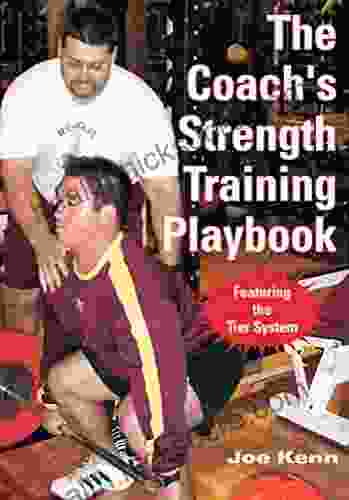
 Floyd PowellThe Comprehensive Guide to The Coach Strength Training Playbook: Unleashing...
Floyd PowellThe Comprehensive Guide to The Coach Strength Training Playbook: Unleashing...
 Jeffrey HayesRisk Management in Unconventional Settings: Exploring Unexpected Places to...
Jeffrey HayesRisk Management in Unconventional Settings: Exploring Unexpected Places to...
 Jacob HayesHow Boxer Tim Bradley Won Championships And Respect: A Journey of Triumph and...
Jacob HayesHow Boxer Tim Bradley Won Championships And Respect: A Journey of Triumph and... William ShakespeareFollow ·18k
William ShakespeareFollow ·18k Jay SimmonsFollow ·11.6k
Jay SimmonsFollow ·11.6k Julian PowellFollow ·16.8k
Julian PowellFollow ·16.8k Hunter MitchellFollow ·2.1k
Hunter MitchellFollow ·2.1k Felipe BlairFollow ·18.8k
Felipe BlairFollow ·18.8k Victor TurnerFollow ·16k
Victor TurnerFollow ·16k Albert CamusFollow ·19.9k
Albert CamusFollow ·19.9k Bryce FosterFollow ·13.2k
Bryce FosterFollow ·13.2k
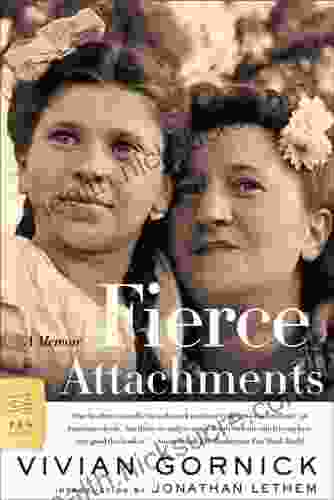
 Dominic Simmons
Dominic SimmonsFierce Attachments: A Memoir by Vivian Gornick - A...
Vivian Gornick's Fierce Attachments is a...

 Edison Mitchell
Edison MitchellPrimer for America's Favorite Wilderness: A Comprehensive...
In the vast...
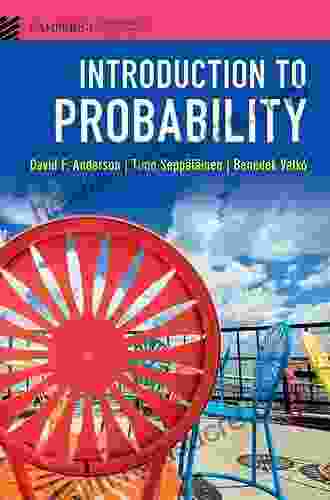
 Jan Mitchell
Jan MitchellIntroduction to Probability: A Comprehensive Guide for...
Probability is a crucial branch of...
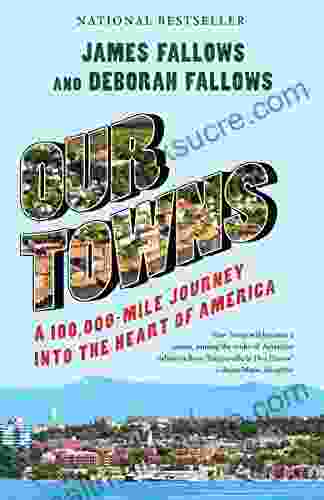
 Chuck Mitchell
Chuck Mitchell100,000 Mile Journey Into the Heart of America
In 2016, I embarked on a...

 Eddie Bell
Eddie BellHow Schools Around the World Are Inspiring Greatness One...
Education is the key...

 Quentin Powell
Quentin PowellJourney into the Heart of Alaska: Exploring the Majestic...
Alaska, the largest...
4.8 out of 5
| Language | : | English |
| File size | : | 15305 KB |
| Text-to-Speech | : | Enabled |
| Screen Reader | : | Supported |
| Enhanced typesetting | : | Enabled |
| Word Wise | : | Enabled |
| Print length | : | 230 pages |


